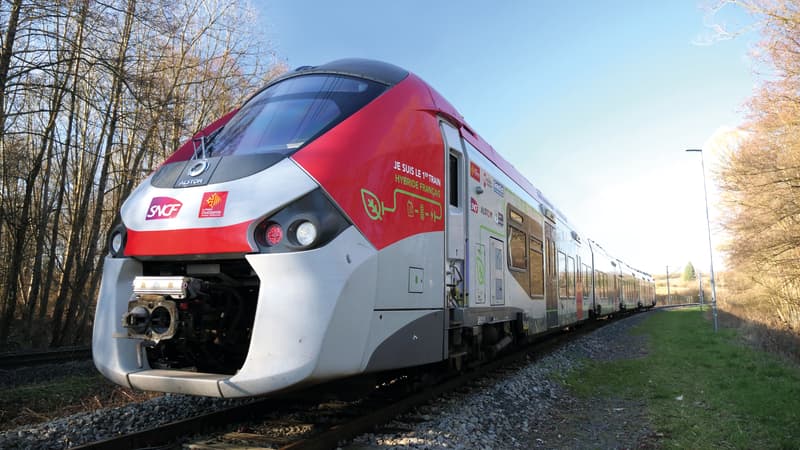In the Occitania region, users of certain TERs may have the possibility at the end of the year or the beginning of 2024 of traveling on board the first hybrid train that circulates in France.
“The start of the experimental commercial service is planned for the end of 2023 in Occitanie, in particular on the Mazamet – Toulouse and Rodez – Toulouse lines once the necessary authorizations for passenger transport have been obtained. The modified train will then run during the year 2024 in the territories of the New Aquitaine, Grand Est and Centre-Val de Loire regions,” read an Alstom press release.
“Tomorrow we will go even further, as Montréjeau-Luchon will be the first line fully covered by hydrogen trains in 2025/26. And through our new agreement adopted this year, we are pursuing the goal of achieving a 40% reduction in carbon emissions in the liO regional train network by 2032”, comments Carole Delga, President of the Occitanie/Pyrénées-Méditerranée Region.
This type of train is part of the SNCF arsenal for the circulation of green equipment on non-electrified lines or sections of line (40% of the French network). In fact, the operator shows the goal of getting out of diesel in 2035 and being at zero CO2 emissions in 2050.
next to hydrogen traintechnically ready and should start circulating in 2024/2025, without emitting any carbon emissions, in four French regions (with 12 trains in total), the SNCF and its industrial partners, as well as certain regions, are also betting on the hybrid train. A budget of 17 million euros is dedicated to him, distributed among all the agents involved.
No need to make new oars
Unlike hydrogen, which requires the production of new trains, hybrid power only requires the transformation of existing Regolis thermal trains.
How does it work? The hybridization of the train consists of replacing half of the combustion engines with energy storage systems made up of lithium-ion batteries. The latter are fed by the energy generated by the braking of the trains. The recovery rate reaches 90%.
Specifically, the use of batteries allows a fuel reduction of 20%, explain the SNCF and Alstom, without reducing the capacity of the train or its speed.
The zero emission mode (that is, only with battery) offers a range of 23 to 27 kilometers. It’s not much, but this mode is designed for a very specific use: in an urban environment or on the dock. This reduces CO2 emissions in the city but also noise pollution, the electric mode being much less noisy.
For the regions that operate and finance these trains, the SNCF promises lower upkeep and maintenance costs than with 100% diesel trains.
Regions hold the cards
In Occitania, “the tests showed that the train behaved as expected. The energy recovery rate during braking, used to recharge the batteries, reached a very high level, over 90% (…) In non-electrified lines, the hybrid regional train retains the autonomy of the initial model up to 1000 kilometers”, explain the partners.
If the region is the only one to have placed an order for a hybrid train, other regions are partners in the project, in particular New Aquitaine and Grand Est.
“The industrial deployment of the hybridization solution on the other dual-mode Régiolis trains remains to be finalized and could begin as soon as the Regions, the authorities that organize regional passenger transport, have decided,” the statement read. press.
According to SNCF, the 230 Alstom Regiolis diesel regional trains currently running on the network can now be converted into hybrid trains.
Source: BFM TV


